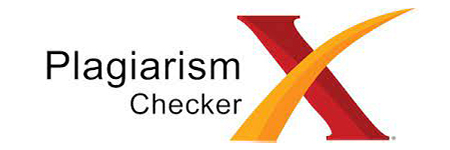Pengukuran Kinerja Yayasan Unit Air Bersih Nagari Gurun Menggunakan Metode Balanced Scorecard
DOI:
https://doi.org/10.70716/ecoma.v2i3.79Keywords:
Balanced Scorecard, Performance MeasurementAbstract
The purpose of this paper is to analyze performance measurements at the Desert Development Drive Foundation for clean water units using the Balance Scorecard method. A Balanced Scorecard is a framework that helps organizations plan, focus, and manage their strategy. Located in Nagari Gurun, Sungai Tarab sub-district. This type of research includes quantitative data. and There were four discussions about performance during this study. First, financial effectiveness. Second, customer effectiveness, including target market, services, and ways to get more customers. Third, effective business processes and business rules. Fourth, effective expansion and innovation of clean water in Nagari Gurun. This study found that implementing BSC increases employees' understanding of the company's strategic goals, improves the way managers communicate with customers, and increases customer satisfaction. Additionally, the study found that BSC helps management make better and more conscious decisions. These results demonstrate the importance of BSC as a tool for achieving competitive advantage in a dynamic business environment, as well as contributing to management practices. It is hoped that this research can help the Nagari Gurun Clean Water Unit Foundation in measuring the performance carried out in the decision-making process and innovation for the future.
Downloads
References
Abidin, A. Z. (n.d.). Balanced Scorecard. Insight Mediatama.
Agarwal, S., Garg, G., & Sharma, V. (2022). Exploring sustainability balanced scorecard for humanitarian organizations. More Sustainability, 5(1), Article 39. https://doi.org/10.3390/MOSUSTAINABILITY5010039
Arifuddin, A., Hasan, M., & Rizal, A. (2022). Evaluation of financial performance measurement in Islamic cooperative using balanced scorecard. Journal of Islamic Accounting and Business Research, 13(4), 545-561. https://doi.org/10.1108/JIABR-10-2020-0398
Colbran, R. (2019). A systematic review of organisational performance measures for non-acute health charities. BMC Health Services Research, 19, 719. https://doi.org/10.1186/s12913-019-3952-1
Gomes, R. C., Silva, A., & Ferreira, M. P. (2023). Balanced scorecard: Trends, developments, and future directions. Review of Managerial Science. https://doi.org/10.1007/s11846-023-00700-6
Halimah, R. N. (2015). Implementasi Balanced Scorecard untuk penilaian kinerja pada Bank Syariah Muamalat Samarinda. Ekonomia, 4(2), 84-94.
Kumar, A., Brar, V., Chaudhari, C., & Raibagkar, S. S. (2022). Performance management through the balanced scorecard approach by the South African Revenue Service. Public Performance & Management Review, 44(4), 763-786. https://doi.org/10.1080/15309576.2021.1898454
Marheni, M. (2019). Penilaian mutu perguruan tinggi dengan perspektif balanced scorecard di IAIN Syaikh Abdurahman Siddik Bangka Belitung. SUSTAINABLE: Jurnal Kajian Mutu Pendidikan, 2(2), 228-244.
Mariza, I. (n.d.). Pengukuran kinerja dengan balanced scorecard. Journal The Winners, 4(2), 127-137.
Octaviana, O., Marsiwi, M., & Ardiana, L. (2023). The influence of applying balanced scorecard to improve MSMEs performance in Trenggalek Regency. Monex-Journal of Accounting Research, 12(2), 282-296.
Pundi, I. K., Harjadi, B., & Suwandi. (2020). Analisis kinerja organisasi melalui balanced scorecard: Studi pada lembaga zakat. Jurnal Manajemen & Bisnis, 9(1), 67-79.
Pratiwi, M. A. (2022). Analisis evaluasi kinerja UMKM dengan metode balanced scorecard (studi kasus Bintan Snack Millennium). Manajerial dan Bisnis Tanjungpinang, 4(2), 149-158.
Rangkuti, F. (2013). SWOT–Balanced Scorecard. Gramedia Pustaka Utama.
Sari, R. A., Oktaviani, A. R., & Mukti, S. A. C. (2023). Analisa efektivitas persediaan UMKM menggunakan metode EOQ. Manajemen, Bisnis dan Ekonomi, 1(2), 58-72. https://doi.org/10.26798/manise.v1i2.821
Sumardi, R., & Efendi, S. (2019). Upaya meningkatkan kinerja dengan pendekatan aplikasi balanced scorecard pada perguruan tinggi swasta di Jakarta. Populis: Jurnal Sosial dan Humaniora, 4(2), 220-232.
Supono, S. (2019). Analisis kinerja keperawatan di rumah sakit Aisyiyah Kabupaten Kudus dengan pendekatan balanced scorecard. Jurnal Ilmu Keperawatan dan Kebidanan, 10(1), 182-189.
Suwarto, T., Hartitia, T., & Sulisno, M. (2019). Analisis kinerja keperawatan di rumah sakit Aisyiyah Kabupaten Kudus dengan pendekatan balanced scorecard. Jurnal Ilmu Keperawatan dan Kebidanan, 10(1), 182-189.
Treinta, F. T., Souza, D., & Pereira, A. (2020). Design and implementation factors for performance measurement systems (PMSs) in NPOs. Cogent Business & Management, 7(1), 1722225. https://doi.org/10.1080/23311975.2020.172222
Downloads
Published
How to Cite
Issue
Section
License
Copyright (c) 2024 Mega Rahmi, Misbah Yusri, Muchlas Hamdani, Muhammad Irfanul Hakim, Nurul Fikri, Yosep Eka Putra

This work is licensed under a Creative Commons Attribution-ShareAlike 4.0 International License.











